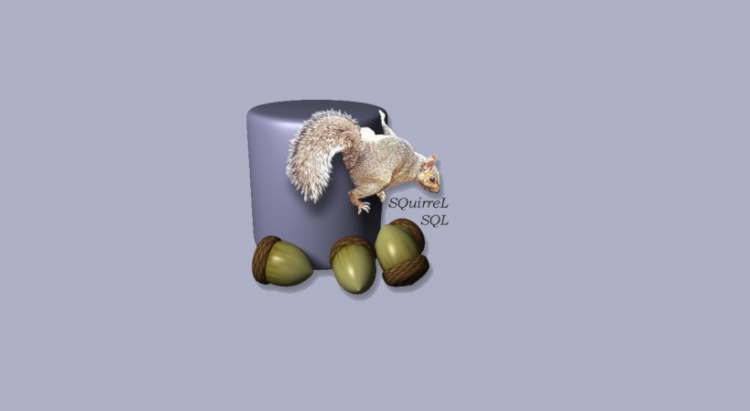The differences between DBeaver and SQuirreL SQL can be quite confusing to new users, especially if you are trying to figure out which one would be better suited to your own needs. To help you make an informed decision about which one will suit your needs the best, we decided to conduct this detailed comparison of both products and analyze each one in detail so that you can decide whether one of them would be better suited to your needs than the other.
What is DBeaver?
A full-fledged free open source universal database tool for developers, SQL programmers, database administrators, and analysts. The goal of DBeaver is to become an efficient and handy tool for day-to-day work with any kind of database.
Written in Java, it runs on all major operating systems (Linux, Windows, Mac OS X). Cross-platform compatible. Free (no costs for use). Open-source. 100% native connectivity – works with any databases without ODBC or JDBC driver.

What is SQuirreL SQL?
An open-source graphical SQL client which runs on Java and supports almost all databases. Written in Java, it uses JDBC to connect to a database. It is free software and comes with ABSOLUTELY NO WARRANTY. You may redistribute it and/or modify it under a GPL license. The current version is 2.7 from July 2017.

Difference between DBeaver and SQuirreL SQL
DBeaver is a free database management system (DBMS) that allows users to create databases and perform queries against them. It was originally developed by Oracle Corporation but has since been released under the GPL license. SQuirreL is a commercial DBMS from MySQL AB. Both are open-source software packages that allow users to manage their data.
SQuirreL SQL is a proprietary extension of the popular open-source MySQL database management system. It provides a set of tools to query relational databases. This includes features like full-text search, stored procedures, triggers, views, and foreign keys.
Installers: DBeaver vs. SQuirreL SQL
If you’re new to MySQL, it can be daunting to choose an installation program. One of your first decisions will be whether to install from a pre-built binary or compile from the source. The latter requires that you build everything yourself and can take hours depending on how powerful your computer is and how much help you get from all those error messages that pop up during compilation. The good news is that all pre-built binaries are free, so why not use one of them?
Setup: DBeaver vs. SQuirreL SQL
Get both installed onto your computer. Don’t configure anything for now, just have them both running on your computer at once. Start up each tool and take a look around and see what you notice as similarities and differences. Make note of these (even if they’re just being silly in your head). Go through every tab in each tool to help familiarize yourself with its features.
Navigation and UI: DBeaver vs. SQuirreL SQL
Open a project in both DB clients and see which interface you prefer. If they’re similar, feel free to use your favorite. If they’re vastly different, take a minute to read up on each tool. Remember that every client has its strong points; for example, in my case, I used DBeaver for querying databases and SquirrEL for executing plain-text SQL scripts against local and remote systems.
Database support: DBeaver vs. SQuirreL SQL
The most obvious and fundamental difference between these two open-source tools is that SQLExplorer targets a broader range of database management systems. While DBeaver is only suitable for working with MySQL, SQLExplorer supports a much wider range of popular database management systems, including but not limited to Oracle, PostgreSQL, MSSQL (various versions), DB2 (any version), Derby, and more.
Additional features: DBeaver vs. SQuirreL SQL
The main additional feature of MySQL Workbench is its support for all kinds of databases. From Oracle to Microsoft Access and even PostgreSQL, MySQL Workbench has it all covered. However, that comes at a cost of complexity as each database type has different nuances and features which are also supported by MySQL Workbench. If you’re not working with multiple databases then there’s no need to buy a tool like MySQL Workbench as simpler tools like HeidiSQL or DBeaver may do what you need without adding any bloat.
Community support: DBeaver vs. SQuirreL SQL
For developers and IT pros, having an active community is critical to a software’s success. With over 200,000 users, it’s easy to find a support forum or Q&A section for almost any question that comes up. Furthermore, if you need some guidance from someone more experienced than you are with DBeaver (or maybe even help writing that query), there are plenty of users who can lend a hand.
Learning curve: DBeaver vs. SQuirreL SQL
Both tools require some time to learn, but there are advantages and disadvantages to both. For example, since DBeaver runs from within a browser (meaning you don’t have to worry about installing software), it requires that you can connect directly with your database via a web service or an SSH tunnel. On the other hand, SQRL requires that you install its database connector on every database server you want to manage.
Cost: DBeaver vs. SQuirreL SQL
The regular version of SQuirreL is completely free to use. The trial version of DBeaver, on the other hand, has several limitations (such as 10-minute session timeouts and a maximum database size of 1GB). If you want full access to DBeaver’s features and options, you’ll need to purchase a license for USD 99.95. The full list of DBeaver license prices can be found here.
Conclusion
Both are excellent products and can be used in combination with one another to great effect. However, it is important to recognize that they serve different purposes. While SquirreL is a lightweight tool for everyday database management, DBeaver is more like a complete IDE, making it more suitable for daily database development tasks.